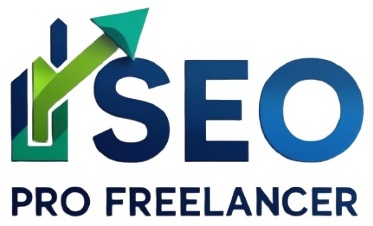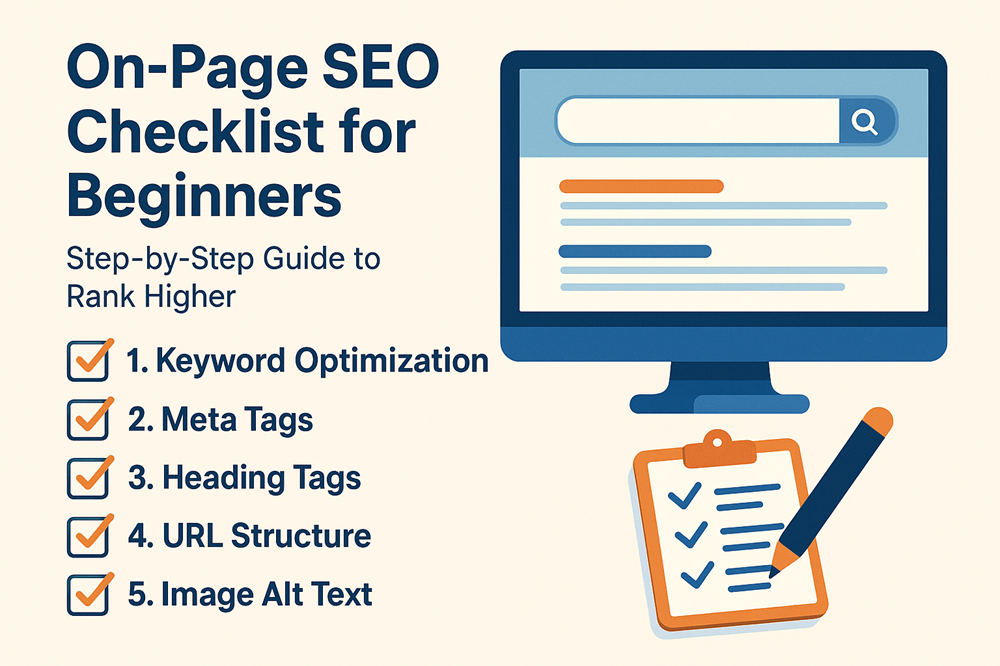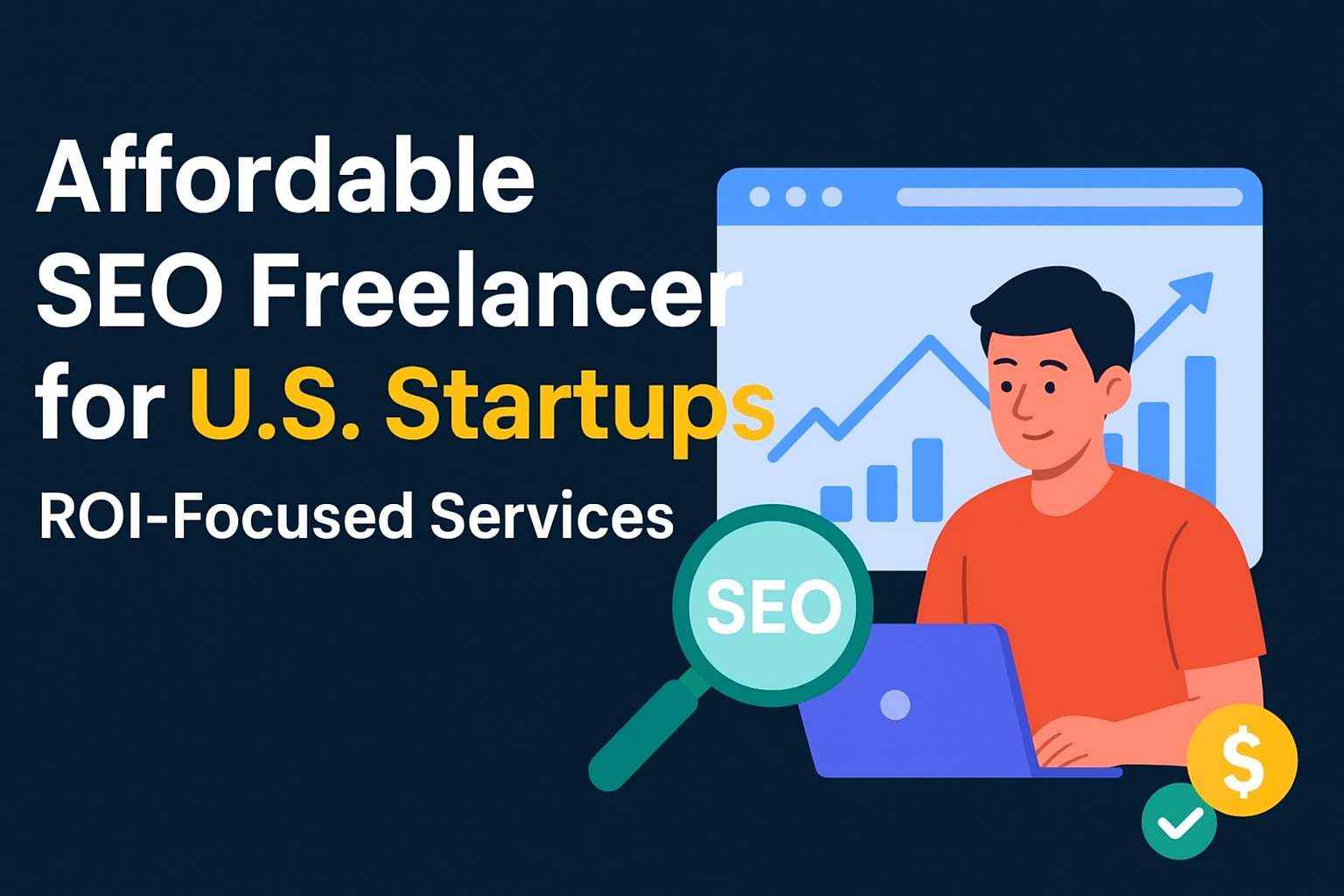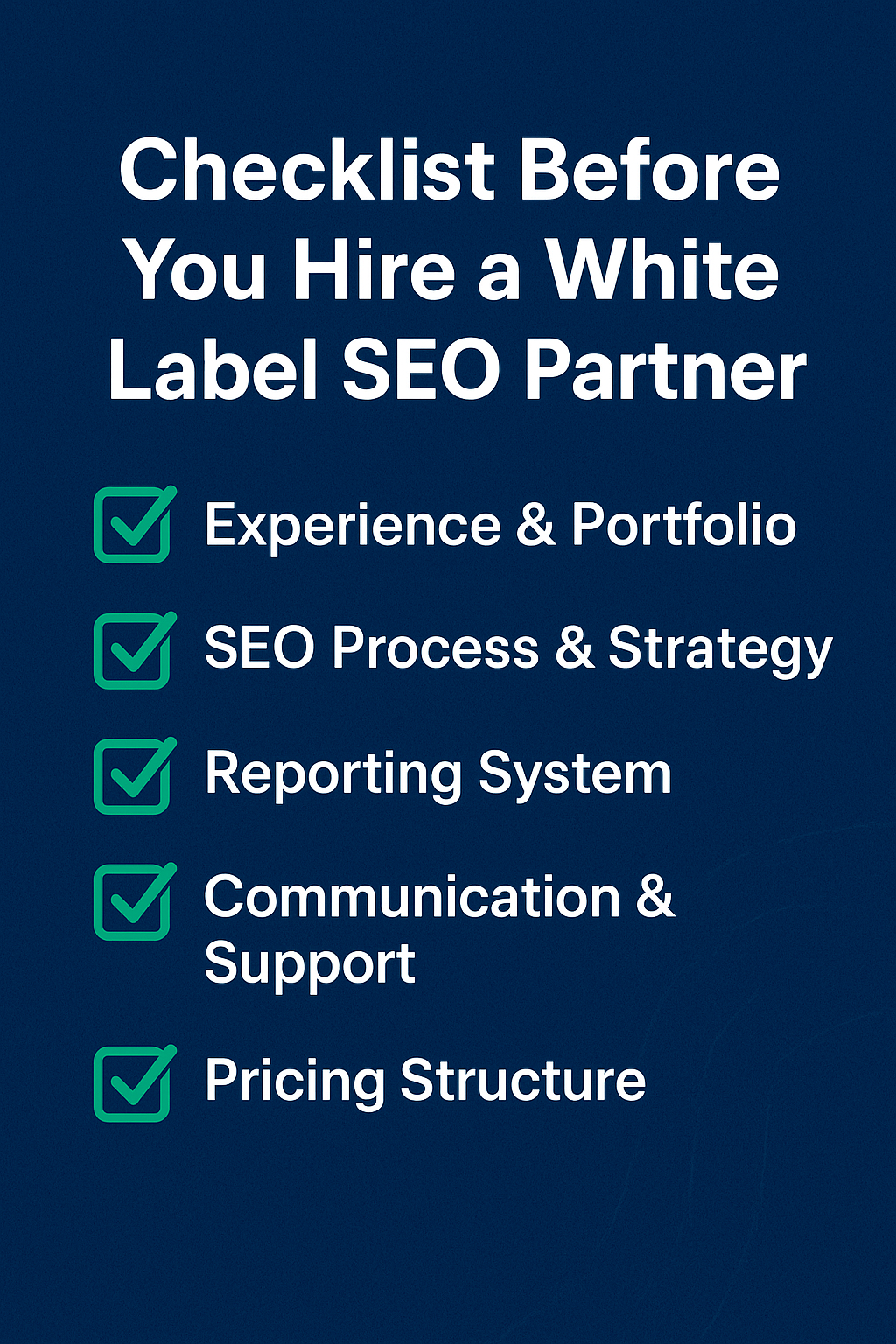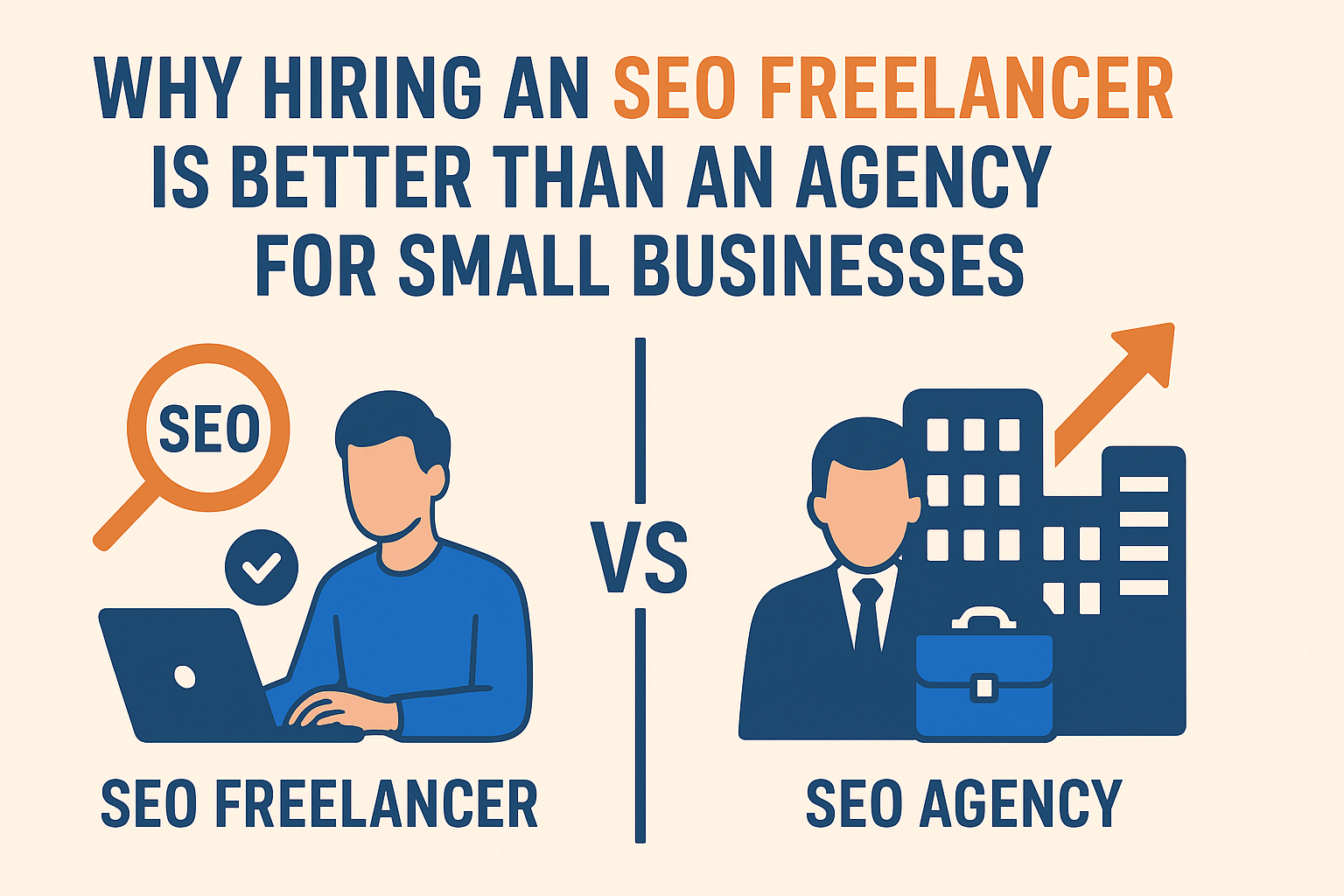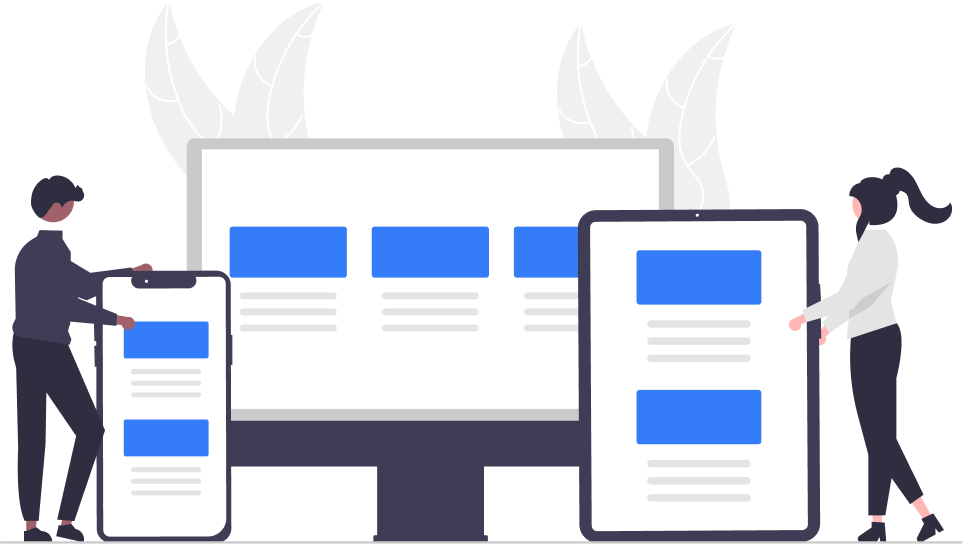If you’re new to digital marketing, one of the first things you’ll hear about is On-Page SEO. Simply put, this refers to optimizing elements on your website to improve search engine rankings and deliver a better user experience. To help you get started, we’ve created a simple yet powerful On-Page SEO Checklist for beginners.
Whether you run a small business, blog, or eCommerce store, following this checklist will make your site more visible and increase your chances of attracting qualified traffic.
✅ What Is On-Page SEO?
On-page SEO (also known as on-site SEO) is the process of optimizing content, HTML tags, internal links, and the overall structure of your website so that search engines like Google can better understand your pages. Unlike off-page SEO, which relies on backlinks and promotion, on-page SEO is fully under your control.
🔑 Why Beginners Need an On-Page SEO Checklist
If you’re just starting, it’s easy to miss important elements like meta descriptions, alt text, or internal links. That’s why having a step-by-step On-Page SEO Checklist ensures nothing gets overlooked. When each page is properly optimized, you’ll:
- Improve search rankings
- Attract more organic traffic
- Increase click-through rates (CTR)
- Enhance user experience
📋 On-Page SEO Checklist for Beginners
Here’s a beginner-friendly checklist you can follow for every page on your website.
1. Optimize Your Title Tag
- Keep titles under 60 characters
- Use your primary keyword at the beginning
- Make it engaging and clickable
Example: On-Page SEO Checklist for Beginners | Step-by-Step Guide
2. Write Compelling Meta Descriptions
- Keep it under 160 characters
- Include your focus keyword naturally
- Add a call-to-action (CTA) to improve CTR
Example: Discover the ultimate On-Page SEO Checklist for beginners. Follow simple steps to optimize titles, content, and links to rank higher in Google.
3. Use Header Tags (H1, H2, H3) Properly
- Only one H1 per page (main title)
- Break content with H2 and H3 for readability
- Include secondary keywords naturally
4. Keyword Placement & Density
- Primary keyword in the first 100 words
- Maintain around 1% keyword density (avoid stuffing)
- Use LSI keywords (related phrases) like SEO best practices, internal linking, URL optimization
5. Optimize URL Structure
- Keep URLs short, descriptive, and keyword-rich
- Use hyphens instead of underscores
- Example: example.com/on-page-seo-checklist
6. Improve Content Quality
- Aim for at least 1,000+ words (Google prefers in-depth content)
- Write for humans first, search engines second
- Add examples, statistics, or case studies
7. Add Internal Links
- Link to relevant pages on your site
- Use descriptive anchor text
- Helps distribute authority across your site
8. Use External Links (Outbound)
- Link to authoritative sources (Google, Moz, HubSpot, etc.)
- Builds trust and relevance in Google’s eyes
9. Optimize Images with Alt Text
- Use descriptive alt text with keywords
- Compress images for faster loading
- Example: “On-Page SEO Checklist infographic”
10. Mobile Optimization
- Ensure your site is mobile-friendly
- Use responsive design
- Test using Google’s Mobile-Friendly Tool
11. Improve Page Speed
- Compress images and scripts
- Use caching and CDN
- Aim for under 3 seconds of load time
12. Add Schema Markup (Optional for Beginners)
- Helps search engines understand your content
- Can improve click-through with rich snippets
13. Enhance User Experience
- Easy navigation
- Clear CTAs
- Engaging visuals and readable fonts
📌 Quick Recap: On-Page SEO Checklist
- ✅ Title tags
- ✅ Meta descriptions
- ✅ Header tags (H1, H2, H3)
- ✅ Keyword placement
- ✅ URL optimization
- ✅ High-quality content
- ✅ Internal linking
- ✅ External links
- ✅ Image optimization
- ✅ Mobile-friendliness
- ✅ Page speed
- ✅ Schema markup
- ✅ User experience
Following this On-Page SEO Checklist will give your website a solid foundation to rank better on search engines.
🚀 Final Thoughts
If you’re just starting with SEO, following this On-Page SEO Checklist for Beginners is the best way to build a strong foundation. By optimizing titles, meta descriptions, URLs, content, and images, you’ll set your site up for long-term success.
💡 Want expert help with SEO?
👉 Hire SEO Pro Freelancer to optimize your website, improve rankings, and bring in more customers.
🙋♂️ FAQs About On-Page SEO Checklist
1. What is the most important element of On-Page SEO?
Title tags and high-quality content are the most important since they directly influence rankings and click-through rates.
2. How long should my meta description be?
Keep it under 160 characters so it displays fully in Google search results.
3. Can I rank without backlinks using On-Page SEO only?
Yes, for low-competition keywords, strong on-page SEO can help you rank without backlinks.
4. How often should I update my On-Page SEO Checklist?
At least once every few months, since Google updates its algorithm regularly.
5. Is keyword density still important?
Yes, but keep it natural. A ratio of around 1% is ideal to avoid keyword stuffing.

